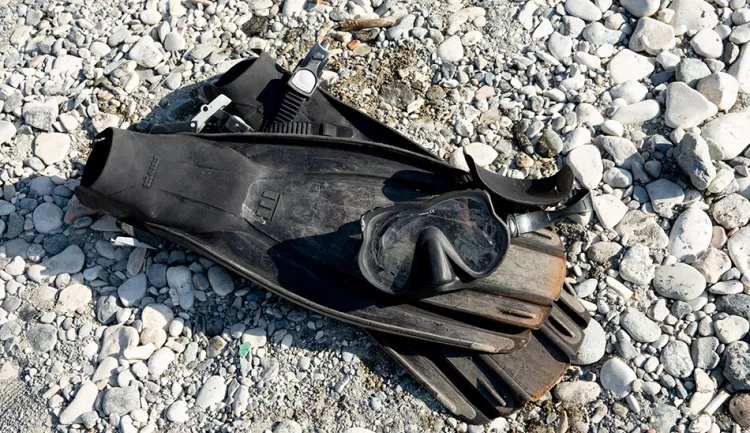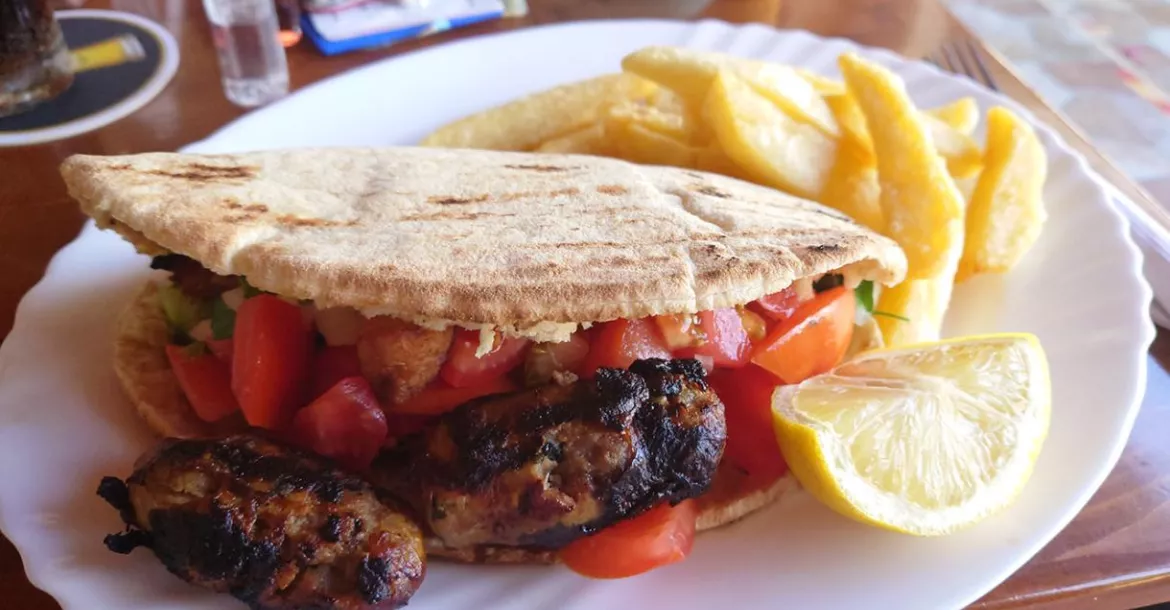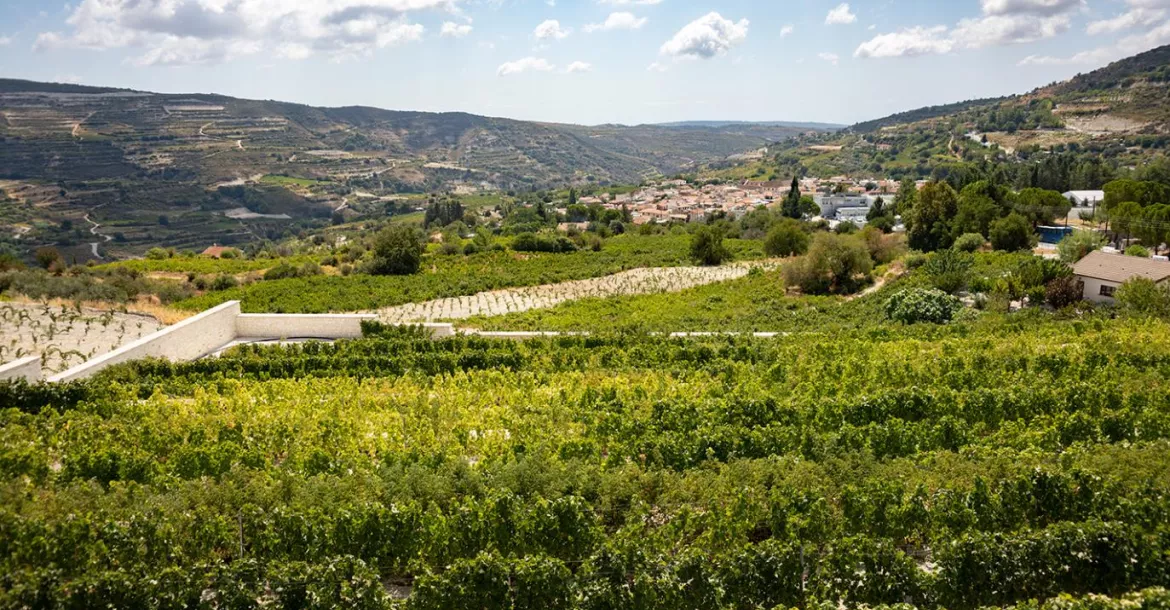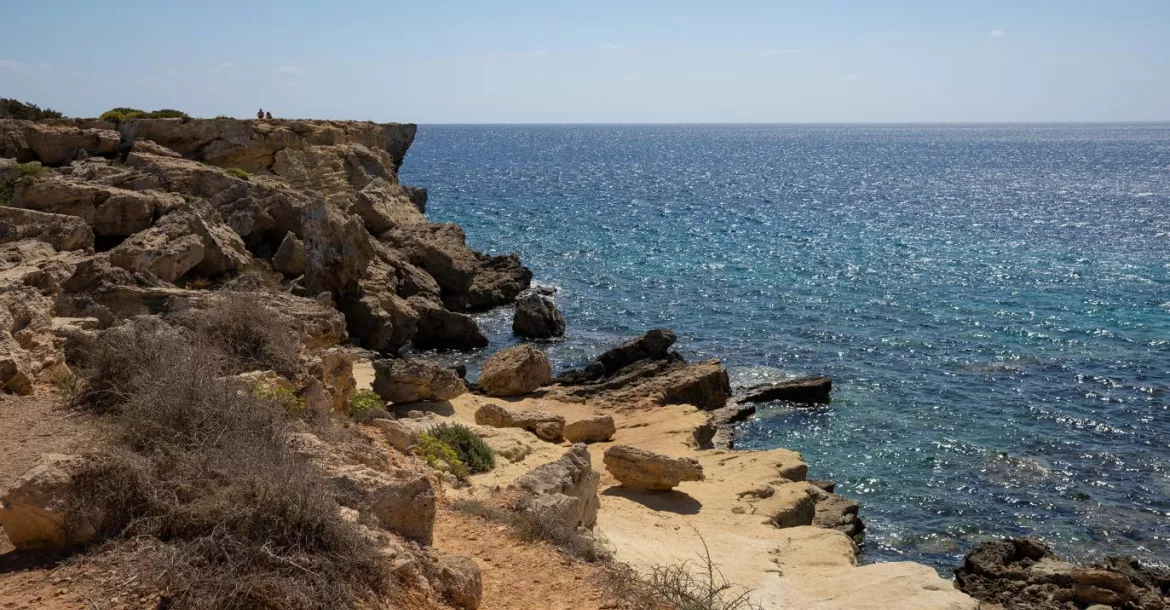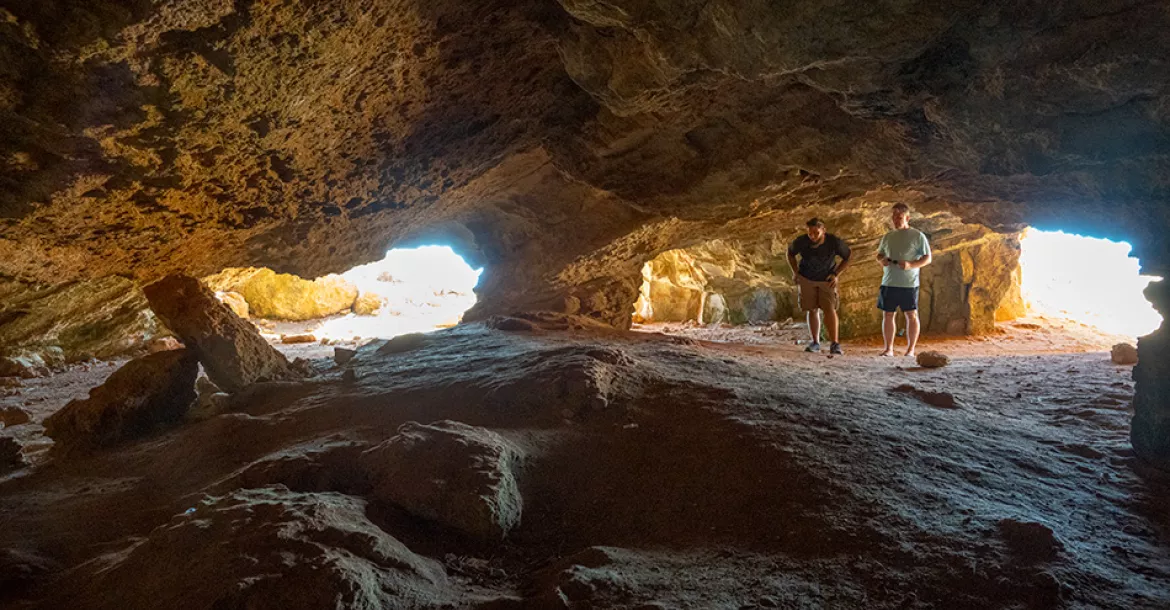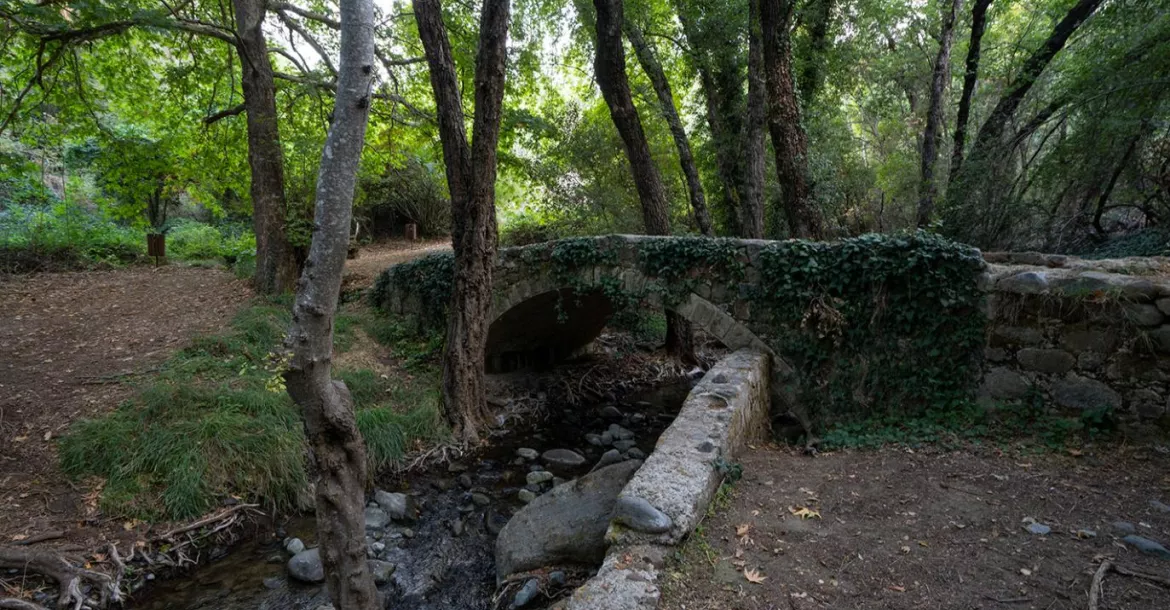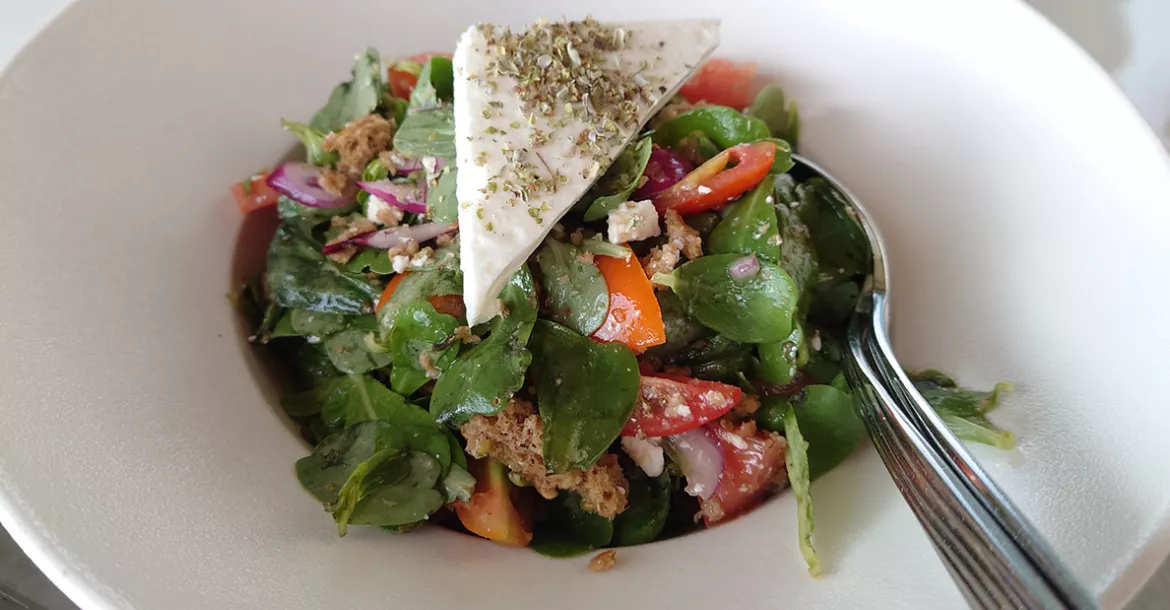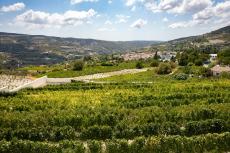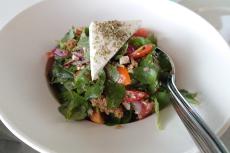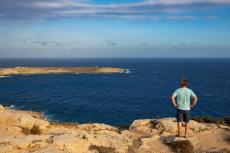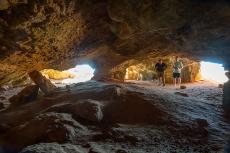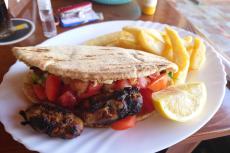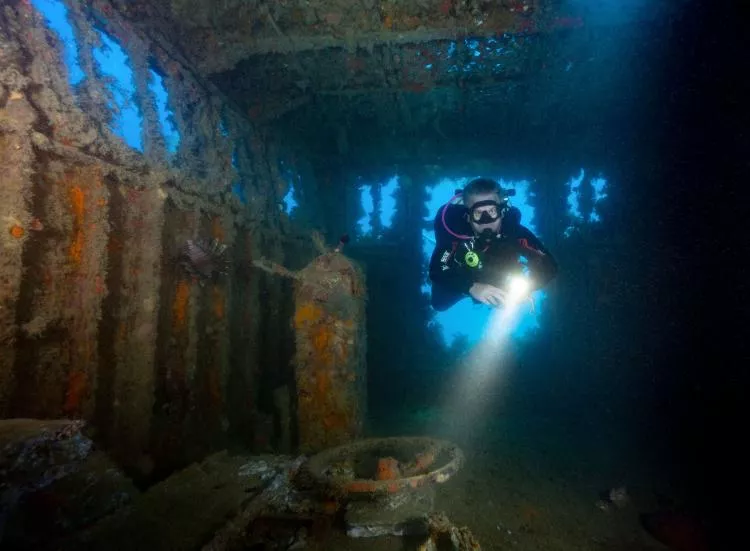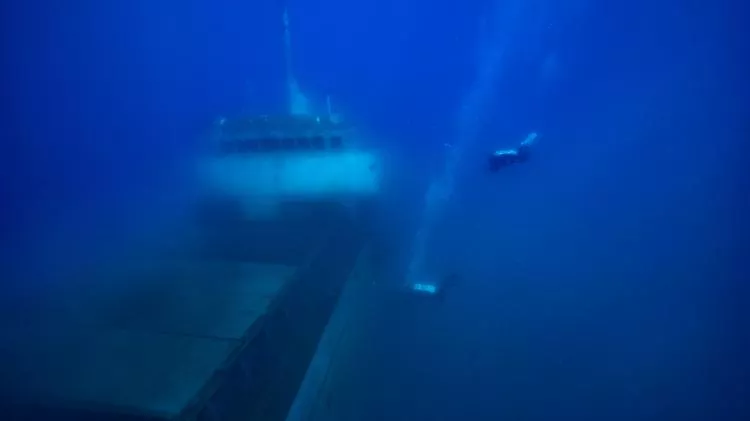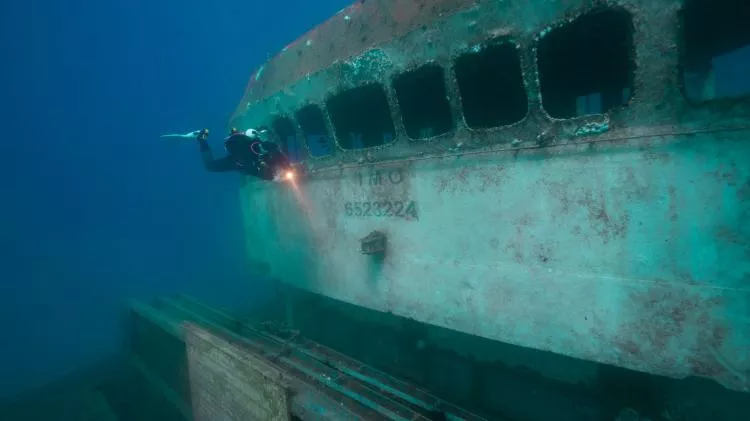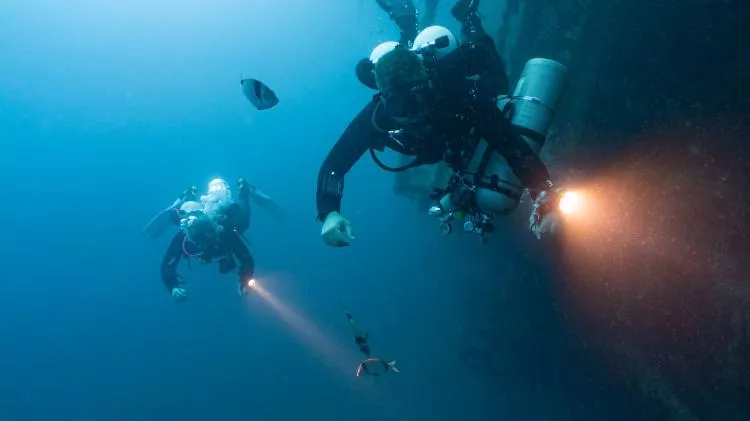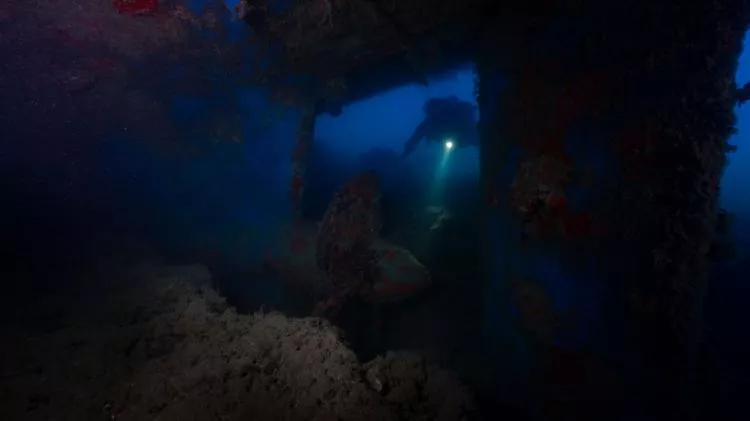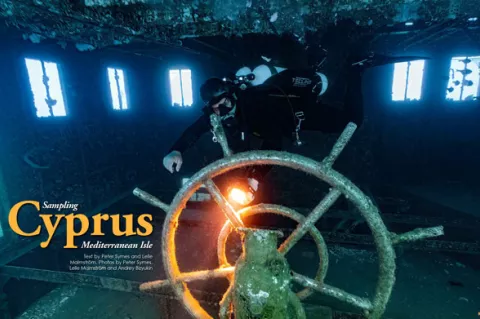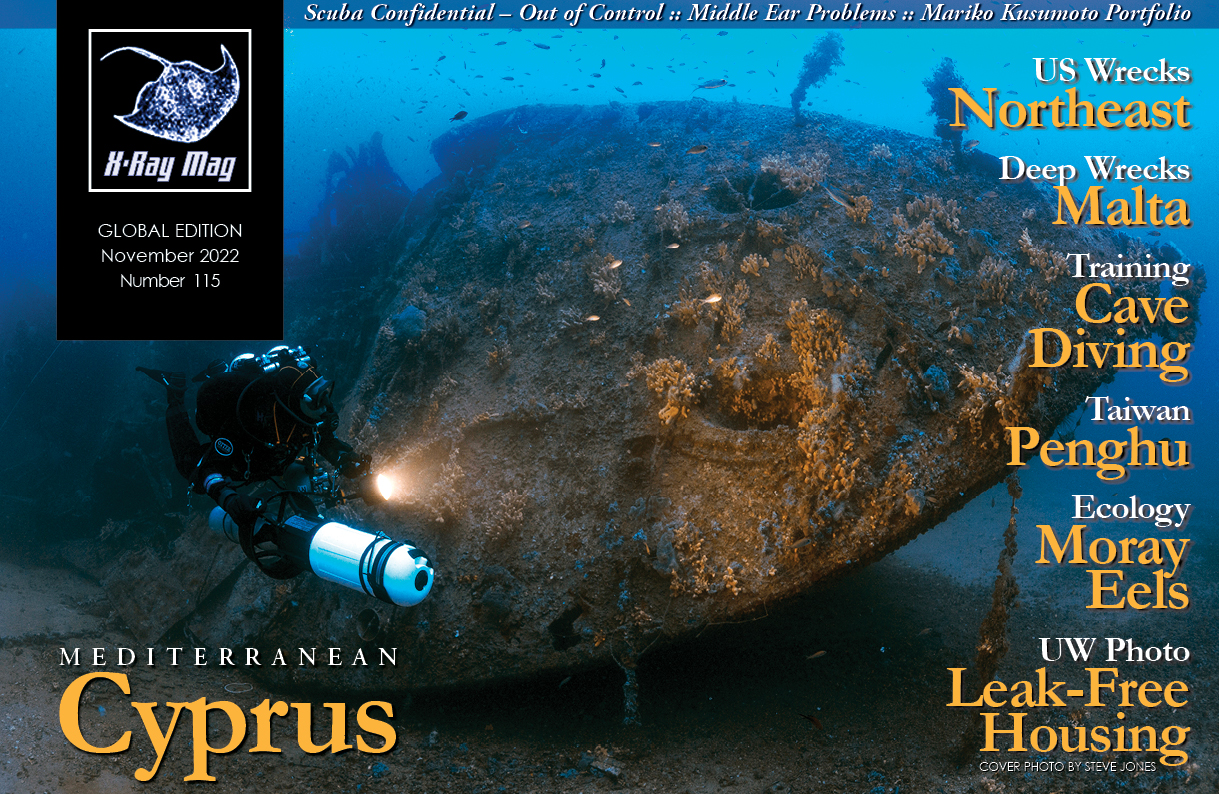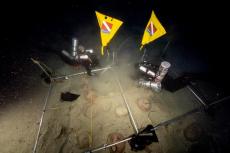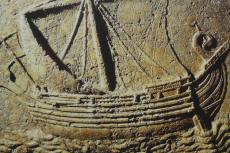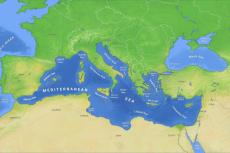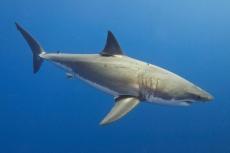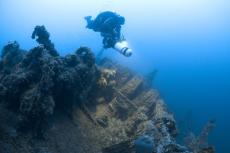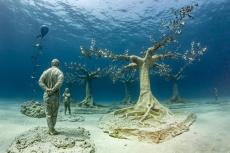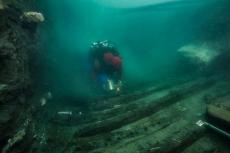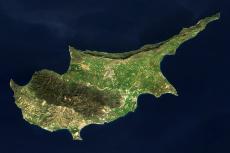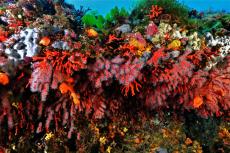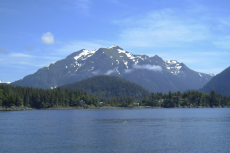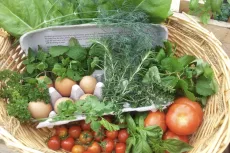In the far corner of Europe, in the Levant and almost wedged in-between Asia Minor, the Middle East and Northern Africa and at the crossroads of the same, Cyprus offers a nourishing mix of varied diving, culture and cuisine. Lelle Malmström and Peter Symes went to check it out.
Contributed by
Factfile
THE SINKING OF ELPIDA
Text and photos by Lelle Malmström
Elpida was sunk on 7 December 2019 as part of Cyprus’ project to create artificial reefs and stimulate the growth of dive tourism. Elpida, which means “hope” in Greek, is a large 63m container ship from Greece. The wreck now lies at a depth just shy of 30m. The main deck is at 20 to 22m, and the top of the masts reaches up to a depth of 10m.
I witnessed the Elpida being scuttled; it was an incredible experience to see it. First, the stern disappeared, and as air trapped inside the vessel forced its way out, cascades of water shot high into the air. Then the middle part sank, and seconds later, the mast—the last visible thing to disappear below the surface. In the middle of these last dramatic seconds, the ship turned upright again, as if on command. Powerful!
As with the other artificial reefs in Cyprus, this new dive site has now been colonised by many different species of marine life. We have already seen large schools of fish attracted to the wreck followed by hundreds of chasing amberjacks.
Lelle and I surely got our fair share of all the above in an action-filled week in the sunny island country of Cyprus, which saw us dive and explore different ends of the South Coast. Aside from some good dives, we also had some lovely land excursions, including a day spent up in the hilly, green wine country, wandering ancient streets while sampling the local cuisine in style.
I should probably begin with a disclaimer: I have a penchant for the Mediterranean. Residing in Scandinavia, where the wonderful summers wane too fast and winters are dreary, dark and too long, it is always nice to escape to sunnier and warmer climes when the storms start howling and frost starts to bite at night. The Med is just a two- to four-hour flight from the lands of the Vikings, so I do not have to contend with the weariness of long trips, let alone whopping jetlag, which tends to bother me still more, when I must travel long-haul.
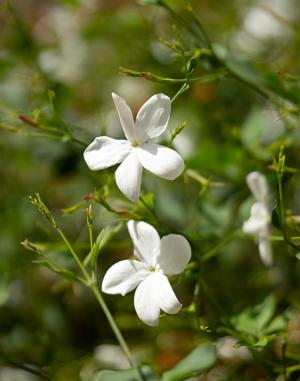
However, the main reason why I love this region is that in the Med, you can do and see so much more than just diving. I may well be just as much a dive-geek as the next bloke—I get antsy to get into the water and see what hides beneath the waves. But I am not so single-minded that I do not want to take in what else is going on, when I visit foreign lands. After all, how much time can you spend underwater every day? A few hours, tops. So, how are you going to spend the rest of your day? I am in for the whole mix. One can catch up on sleep when one gets back home.
Diving
So, let’s dive in—if you will pardon the pun. Diving was indeed the first thing on the agenda in the wee morning hours, after a rather late arrival in Larnaca the previous evening. It was already hot, and the sun was brutal, as we assembled our dive kit at a marina near Larnaca.
First, we were going to dive the Elpida (which was sunk in 2019 to become an artificial reef), and then, the mighty Zenobia. I believe we were summoned so early to get a head start, before the crowds moved in and ruined visibility for good pictures. At least I hope so, because that would be the only acceptable mitigating factor for dragging me out of bed before I had a chance to get enough rest. Those who know me can attest to the fact that I am not a member of the perky early morning people’s club. But there I was, and somewhat robotically, I got kitted up and checked my camera, after which, I was all set.
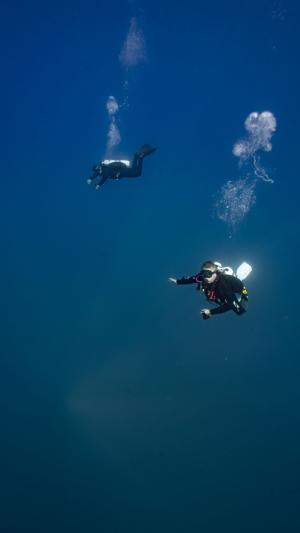
Elpida. Once I slipped under the almost glassy-smooth surface, I could not see anything beneath me at first, but a lot of blueness. Lelle and our guide Andreas were descending some 10 to 15m to my right, each with a wing BCD and bright white double 12-litre twin set on the back; they almost looked like rocket ships descending in formation through the atmosphere of some alien planet, or skydivers wearing wingsuits.
Maybe my vivid imagination just ran away with me that morning, tired as I was, or coffee cravings were messing with me. In any case, it was not long before I picked out the contour of Elpida emanating out of the bluish haze below me, in the distance. Gradually, it came into better focus. It is quite a big ship, and we had it all to ourselves. Maybe I could forgive our planners after all, for getting me up so early.
It was a nice wreck in many ways. Being an artificial reef, it had been both cleaned and stripped of objects that could snare a diver and penetration had been made easier. The inner compartments were also quite spacious and did not have any claustrophobic notes to them, if one had such a disposition.
So, we swam about. First, we went inside the long cargo hold, which did not contain much of interest, except for some skittish fish. It was just a big open space. On the other hand, the superstructure, such as the wheelhouse (where the ship’s wheel was still in place) and the stern were more interesting, with lots of spaces, nooks and crannies to inspect.
In the end, we spent almost 50 minutes poking about, at depths ranging between 16 and 29m, so it was ultimately a matter of deco-limits that made us ascend, not running low on air. Those twin-12s we each carried were quite heavy to handle topside, to put it mildly. But in the water, they were quite comfortable and very well-balanced. I enjoyed the sensation of simply having plenty of air with me, which gave me some added peace of mind and made the dives much more relaxing.
Diving with twin tanks in a wetsuit was also a new combination of equipment for both Lelle and me, but it worked quite well. We were both pleased with the combination, and I would definitely opt for it again, if it was on offer.
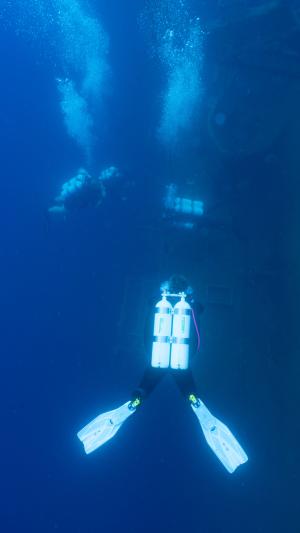
Zenobia. About two hours and a snack later, we found ourselves descending on the nearby Zenobia. If there is a diver, with just a bit of experience, who has not heard about this wreck, they must have been living under a rock. It is one of the most famous shipwrecks for recreational divers, and probably the biggest within the recreational diving range.
The Swedish-built RO-RO ferry capsized outside Larnaca in June 1980 on its maiden voyage, under circumstances that have since provided plenty of fodder for various conspiracy theories over the years. It appears that a problem with the ballast occurred, and the then-advanced computerised ballast system apparently had a software bug, which prevented it from taking the intended corrective action to righten the ship. Instead, it made the list worse by pumping excess water into the ballast tanks on the wrong side. Eventually, on 7 June 1980, Zenobia capsized and sank in Larnaca Bay, about 1,500m from shore, to a depth of roughly 42m (138ft), taking its estimated GB£200 million worth of cargo with it.
Famous as it was, I had surely both read and heard plenty about the wreck, but I was not quite prepared for how massive it truly was. It was ginormous and, by far, the biggest wreck I have ever visited.
As I descended and landed on the starboard side, at a depth of about 16m, all I could see was metal surfaces going on forever, in both directions. Okay, the visibility was not exactly stellar, but it was not bad either. In any case, I started moving along, having little idea where I was, or towards which end of the ship I was now heading.
In hindsight, I should have studied a diagram of the wreck beforehand and made myself more familiar with the site—my bad—or just had a better briefing that day. Despite this, I made it to the wheelhouse area, before turning around and following the deck.
I passed under the vessel’s huge starboard smokestack, which now strutted horizontally out, pointing into an empty void. I could not even see the tip of it. I ended up in the bow area, before having to turn about to get back to the downline. The ship was 175m long, so it was a bit of a swim, while tugging a not-exactly-streamlined camera rig along. So, I was left with plenty more to see and explore. But that would have to wait until the next day.
Once I was back in my comfortable hotel room later that afternoon, it was still less than 20 hours since I had left Copenhagen, having taken an almost four-hour-long flight, followed by a transfer, before checking in late. I was knackered but also filled with a pleasant feeling of accomplishment as I nodded off, completely splatted on my bed, still wearing the same clothes.
I do not know how many hours I spent falling into a black hole before Lelle rang and summoned me to a late snack in the hotel bar, which was on a terrace overlooking the Mediterranean, sparkling in the moonlight. The mild air was a soothing balm, and it felt rejuvenating to be able to step away from the office for a few days.

Second day on Zenobia
On my next dive to the Zenobia, I had a better grasp of the site I was diving, as well as the general layout of the wreck, but I still found myself finning along extensive structures, struggling a bit to find some good angles to shoot. The surfaces of the wreck were just so long and their dimensions so outsized that the ends of them just disappeared into the hazy distance; it was hard to find interesting compositions or defining edges. I could not move far enough back either, to photograph the vessel’s shape, without losing the wreck in the haze.
It was only towards the end of an already long dive, when I was nearly an hour into it, having already gone to a maximum depth of about 35m, that I spotted the vessel’s huge propeller under me. I would have really liked to get a shot from down under it, pointing the camera upwards at the giant propellers.
For a long while, I grappled with the temptation to sink down to the bottom at 42m. But I soon came to my senses. Being that far into the dive as I was, it would probably have resulted in a lengthy decompression obligation if I had darted down, and I had not planned for that. So, I gave it a pass. Next time, perhaps… Better safe, than sorry.
On to Ayia Napa
Next, we went to stay in Ayia Napa for a couple of nights. It was a fun-filled tourist resort town where the partying seemed to be perpetual, with festive bars, fast-food joints and souvenir kiosks lining up and down the high street. Alas, in certain quarters, there was also plenty of hollering by drunk tourists behaving and dressing in ways they surely would not at home. If you are keen on bar crawling and karaoke, this is the place for you. There is even a fun fair with all sorts of joy rides, flashy lights and loud music.
Suffice it to say, this is not my kind of scene—but who am I to judge other people’s proclivities? Call me a bit of a snob all that you like, I just prefer a much different sort of holiday. Fortunately, the surrounding areas were quite nice, including an outdoor sculpture park, which I found interesting, and was within walking distance of our hotel.
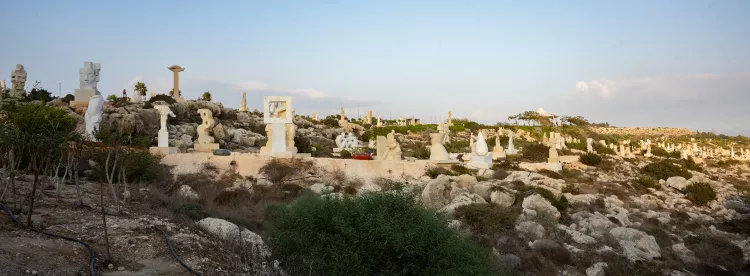
MUSAN. Ayia Napa also happened to be the place where the MUSAN underwater sculpture park was located, as we reported in X-Ray Mag not too long ago. We were supposed to dive this site, but it was unfortunately called off because winds were picking up quite a bit and the sea became choppy, with plenty of rolling white-capped waves. Later, on an evening stroll along the pier, we suddenly found ourselves under a big sign stating that the Museum of Underwater Sculpture Ayia Napa was right there in front of us, but under the now frothing waves. We had no idea. Ah, well… It was still a beautiful moonlit evening, despite missing out on the dive. Plus, our colleague Andrey Bizyukin had already produced an article about it, which we published in issue #107.
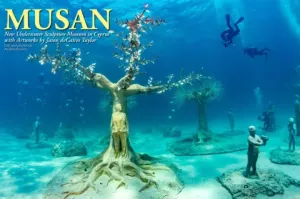
Turtle Bay. Earlier that day, we drove to a place called Turtle Bay, somewhat aptly named, we would later find out. It was a little cove around the corner from Ayia Napa. It was also one of the most ideal natural confined water inlets for basic training I have ever come across. For the first 50m, the water is just thigh-, belly- or chest-deep—and it is sheltered on most sides. There were several dive classes taking place here—or what appeared to be divers in training—as well as plenty of snorkelers.
Lelle, Andreas and I were still wearing the same semi-tech outfits, so we looked a bit out of place among all the other divers, as we swam through the shallow water to get out of the cove. Just outside the cove was a little sculpture park on the sandy bottom. The depth was just 8 to 10m, which made it an ideal site to take dive students.
The statues were sort of cool and seemed to attract schools of smaller fish. Venturing farther out and across the moonscape-like terrain, we did not see a lot of fish but just more and more meadows of sea grass. Then, suddenly and out of nowhere, we spotted a small green sea turtle peacefully grazing on the seagrass. As I moved closer to frame a good composition, the turtle did not mind my proximity but kept on calmly munching away on the veggies. Eventually, it took off and glided gracefully away like a swallow, with a few but powerful strokes of its flippers.
Other than being an excellent site for students and novices, I did not quite know what to make of this location. We had quite a nice long swim along the varied bottom contours, but there was not much life to see—aside from a few skittish fish darting about, here and there.

Nicomas Cliff. I found the subsequent dive off Nicomas Cliff to be more interesting. Andreas had “warned” us, during our lunch break, that it was quite a “difficult” dive. But what he was actually referring to as being difficult, it turned out, was accessing the dive spot beneath a cliff—particularly if one was in bad shape.
The path down the incline was not too steep and had some steps but no big deal. I just went up and down a couple times. I first carried my wing and tanks, and then my camera rig, before going back up one last time to kit up. No problem. We do this all the time back in Scandinavia where most of the coastline is rugged. Why risk straining oneself carrying heavy stuff, or slipping?
This spot was more to my liking. It was steeper, of more varied depth and had a more interesting structure, with walls, boulders and crevices. Once again, we swam about for quite a while and managed to go to a depth of 25m. But once again, there was not a great deal of fish life to be seen.
Cuisine
Have I mentioned lunch? During the first couple of days of our trip, we only managed to have meals at our hotels due to our schedule. Breakfast at the hotels were a given, but returning to our hotel rooms quite late in the evenings, quite tired as well, for the first couple of evenings, we opted just to go downstairs for supper and quell our instincts to venture out in search of something genuinely local.
There was nothing wrong with the hotel food; it was excellently prepared and delicious. It was just that many international hotels tend to serve a somewhat same-ish range of standard dishes, such as Caesar salad, chicken salad, tortellini, burgers, etc—in order to offer something for everyone, regardless of nationality, I presume. However, in the attempt to not put anyone off, one risks pleasing no one.

In my case, the only local dish I got the first two days was Greek salad. But boy, was it yummy! The lettuce was crispy fresh, the olives succulent and intense, and the cucumber crunchy. I could eat this stuff almost every day. I surely did not mind that it was quite healthy too.
But back to our lunch that day… Between the aforementioned two dives, we went to a nearby little town and sat down at a local cafe or bar, which did not seem much, at first glance. No offence, but I would not have been able to pick it out among the many other similar-looking establishments. Yet here I was served wonderful souvlaki, so fresh that one could almost hear it bleat or moo, medium done, so that it was still succulent, and it perfectly hit the sweet spot between too dry and too undercooked, with a slight but distinct note of smoke from the barbecue.
I realise I may now sound like a downright foodie. I’m really not, but I do appreciate good and proper food. It builds and restores our bodies, and a good diet is the best medicine too. If we elect to put premium fuel in our cars, why should we not give a thought to what we put in our mouths as well? But I digress… Suffice it to say that a good meal is also a right mood enhancer. It surely did the trick for me, and I was quite content with life, as I waddled out of there with a ballooning tummy.
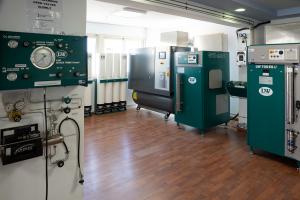
Tank facility
Between dives, we also paid an interesting visit to a unique facility. At least, I have not seen anything like it elsewhere. It was a facility that serviced dive centres, not the general public, and provided all sorts of tanks and gas fills. The facility had 580 tanks, so we were told, and an impressive array of compressors, air banks and mixing panels. The scale and capacity were industrial. Here, or so it seemed, one could get any size of tank and all sorts of nitrox and trimix blends. There sure was a lot of advanced hardware crammed into the premises.

Monument of Peace (promontory)
Later that same day, we went up to the Monument of Peace, located on the promontory opposite Cape Greco, which is a national park. That afternoon, we were supposed to dive a location off the cliffs, just below the monument, but the weather forecast had predicted quite strong winds, rendering it impossible to go to that spot under the prevailing conditions.
Glancing down from above, at the cove where we were supposed to go, it was clear why we could not proceed as planned. Somewhat mesmerised, we stared at the water below, which was being whipped into a white froth by pounding waves. At that point, the wind had indeed picked up quite significantly. It was more than brisk. It also made the view all that more spectacular, with the sea behaving so dramatically, at least for a few hours. I do not know how far we could see, but it was at least 50km in each direction. It was breath-taking.
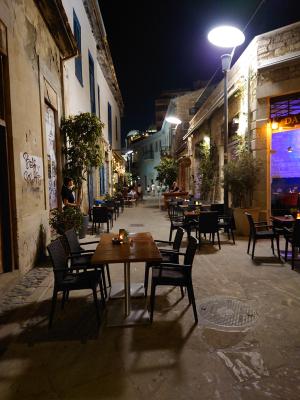
Limassol
This was my favourite town out of the three in which we stayed. It had a historic centre, which was undergoing continuous restoration. I was pleased to learn that much effort was going into restoring dilapidated old buildings (some of which were not much more than virtual ruins), rather than tearing them down and building something modern. I applaud this principle. All too often, we see the historic identity of cities being ripped right out by demolition.
Our rooms at the Poseidonia Hotel offered the most spectacular view over the ocean. Some seven to eight floors up, I had a panoramic view over the ocean from my bed. What a way to wake up each morning! Imagine having an office with such a view? I could get used to that.
In the bay of Limassol, there were also some quite interesting wrecks, which were artificial reefs too. A pair of them, the Costandis and Lady Thetis, lay quite close to one another. So close, in fact, that it was hardly necessary to move the dive boat.
Being artificial reefs, the wrecks had been duly cleaned, with the innards made safely accessible for divers. This also meant that there would not be any historic artefacts to uncover; but it can still be quite a fun dive. At least, I enjoyed them both.
On the wrecks, one can spot schools of damselfish and parrotfish, along with jacks, local sea bream and groupers. Constantis wreck, which was a USSR trawler built in 1989, sits at a depth of 25m. Meanwhile, Lady Thetis, which was formerly a coastal passenger vessel built in Hamburg in 1953, sits at a depth of 19m.
I think I managed to get quite a decent shot of Lelle, with his torch backlighting the propeller and rudder of Lady Thetis. There were also a couple of big groupers taking up refuge here, keeping watch over the wrecks.
Also, mind you, we spotted several lionfish inside most of the wrecks. I find the lionfish rather good-looking and photogenic, with its intricate fan-like fin structure. But sadly, it is also an invasive species both in the Mediterranean, which it probably entered via the Suez Canal, and in the Caribbean, where it wipes out many of the local species for lack of natural predators that can keep it under control. Its fin rays are also tipped with poisonous spikes that you do not want to come in close contact with, so mind what you grab hold of, touch or bump into, if you penetrate wrecks.
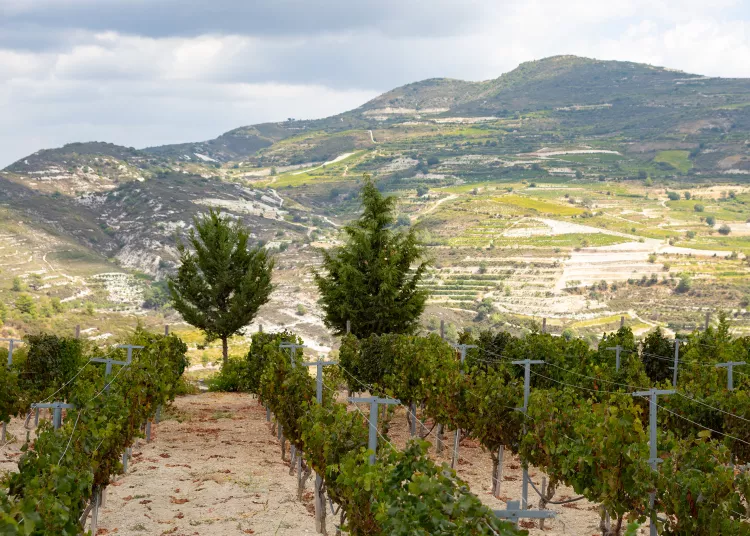
Into the green valleys
Driving up the hills in the hinterland and into the green valleys, where vineyards are kept and other produce is grown, was a really nice diversion from the diving; it offered a complementary contrast to the dry and sun-bleached coastline. First, we visited the ancient village of Omodos, which just so happened to be holding a religious festival and market day.
We soon found ourselves wandering the cobblestone streets, looking at all the goods on display. There were all sorts of fresh produce, local specialties, including snacks and candies—the likes of which I have not seen anywhere else. We sampled foods, getting tasters right and left and enjoying ourselves mightily.
We also paid a visit to the local church. It was full of patrons because of the festival. I was intrigued to note that the architecture appeared to be Gothic—not unlike old churches we have up in Northern Europe. The reason for this was, of course, the long and intricate history of the region where crusaders and others were in control of the island. As mentioned, Cyprus sits at the maritime crossroad between Europe and the Middle East, Asia Minor and North Africa—and it shows, if you care to pay a bit of attention, which I recommend that you do, as it places things in a wider context, giving more meaning to what you encounter along the way.
Cooking lesson
For lunch—and here I go on again about the food, but for a special reason—we went to a restaurant at Petit Palais Platres Boutique Hotel, which has a wonderful view over the mountainous surroundings. It was a bit cloudy and markedly cooler up here, which was both refreshing and soothing, as several days out on the sea and sun-baked beaches had left my skin a tad sore from all the UV rays.
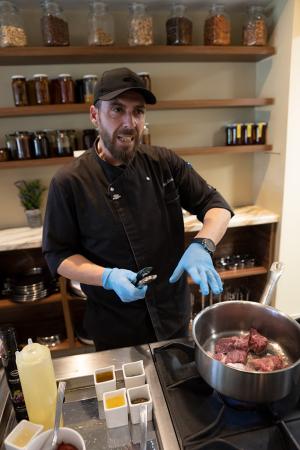
Here, we had the most pleasant and interesting experience of being taught or shown by the cooks how to make a local dish with all the ingredients already lined up. For starters, we got grilled halloumi, which is a special sort of cheese made for cooking. We were implored to always go for quality halloumi, as bad or cheap varieties also taste like it. Thick slices were seared until browned and then sprinkled with grape syrup and coriander. Again, was it delicious? Wow! This was the real deal.
Next was a stew made from a root vegetable, called kolokasi (taro in English), and mutton—although beef or pork can also be used. There are different taro root varieties, but the variety grown in Cyprus is known as Colocasia esculenta. The root, which is some sort of artichoke, must be broken off in lumps and not cleanly cut, we were instructed. Apparently, it opens the porous surfaces that way. It is also important to remember never to wash kolokasi with water but wipe it with kitchen paper instead, as it gets peeled.
Next, the meat must initially be seared under high temperatures before reducing the heat. After that, various chopped veggies were added, as well as broth and seasoning, before the stew was left to simmer for an hour or more. About ten minutes before serving, some large tortellini were boiled and doused with a generous sprinkling of grated cheese (which was not parmesan). We had some local white wine to go with the dish, and for dessert, some sort of halva (confectionery) with cinnamon, syrup and ice cream. (See the recipe at: yummycyprus.com)
Mountain trek
Having enjoyed such a full meal, we decided to walk some of it off by taking a small hike on the mountain trails, which went through a deciduous forest with interesting vegetation. I soon spotted some wild fennel flowering and other herbs among the shrubs. After a short walk, we came to an ancient bridge that crossed a creek. It was called the Venetian Bridge and was another testament to Cyprus’ long and complex history.
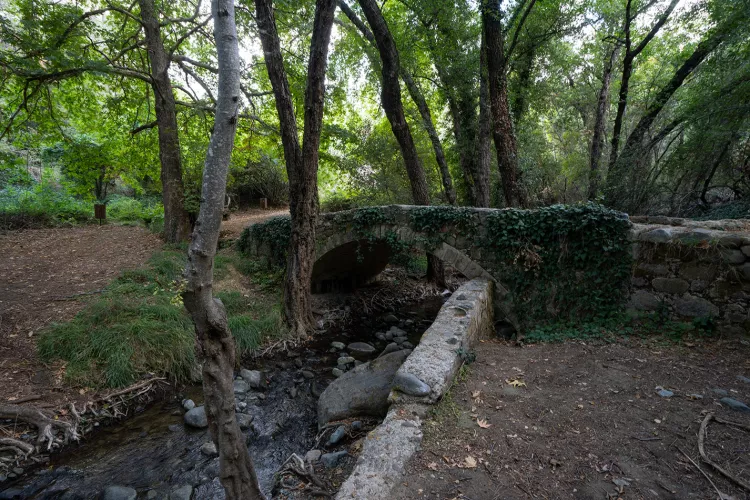
Farther up the creek, there was also the beautiful Caledonia waterfall, and a dam with ducks. All this greenery and fresh water was a nice contrast to the rather dry and bleached coastal areas where we had spent most of our time so far.
But before too long, another eventful day was drawing to a close. As we drove down from the high lands, the sun sinking low, draping the landscape in soft warm light and bringing out its contours, I drifted off in deep thought, pondering the many different peoples and cultures that have played a part in shaping the country of Cyprus.
Limassol historic centre

Who has not heard about King Richard the Lionheart—he, who came home from a crusade at the end of the tale about Robin Hood? In actuality, he never returned to England but died abroad. In any case, legend has it that Richard the Lionheart married Berengaria, the daughter of King Sancho VI of Navarre, inside Limassol Castle on his way to a crusade in 1191. Their marriage lasted eight years before King Richard died, after being hit by a crossbow while besieging a castle in France.
It was not a very big castle, so paying a visit was manageable and worthwhile because of the exhibits inside. On display were artefacts from different epochs, spanning to early antiquity. I liked the intricate ceramics a lot. Surrounding the castle was a lively area with restaurants and bars, which were set in old, restored buildings, some of which I assumed must have been warehouses, tastefully decorated and furnished. It was touristy too, but in a much classier manner; many of the patrons were clearly locals, giving it a reassuring and more genuine feeling.
One night, we had a magnificent dinner in one of the establishments right beside the old castle. All the dishes were local, and we got to try something new, learning about the recipes and preparation too.
Paphos
According to ancient Greek legend, the goddess Aphrodite landed at the site of Paphos when she rose from the sea, and old Paphos was the centre of worship of Aphrodite for the whole Aegean world. In classical antiquity, there were actually two locations called Paphos: Old Paphos, today known as Kouklia, which lies about 16km east of modern Paphos, and New Paphos, which was founded on the sea near a natural harbour. Archaeology buffs will have sites to visit to their hearts’ content, such as Paphos Archaeological Park, which covers most of the ancient Greek and Roman city.
Today, Paphos is a popular tourist resort and is home to a fishing harbour. It is also home to Cydive, the dive operator that would to take us out on our last day of diving. Its facilities in downtown Paphos were quite nicely laid out, with a training pool right in the centre of the premises. I was also left with quite a good impression of this well-run operation. From Paphos, we drove farther west to St Georges Harbour, a small marina just south of Akamas Peninsula, which was the most western part of Cyprus.

Geronisos Island
It only took a few minutes by boat to get out to Geronisos Island, or rather the area surrounding it, because the island itself was nothing but a barren rocky outcrop. The bottom contour was quite varied, with rocks, cliffs and lots of crevices and caverns. Regarding topography, this was the most varied, fun and interesting of the dive sites we got to visit. There was also significantly more marine life out at this end of the island.
The boat was anchored over a plateau, with a depth of around 12m, from where one could easily swim outwards and relatively quickly reach much deeper water. Just by swimming leisurely about the formations, we were soon down to 30m and could easily have ventured even deeper. The defining features of this location were various arches, holes and caverns, which were fun to swim in and out of, or through. As the rock surfaces were covered with a mix of kelp and sponges, it was also more colourful if one brought a dive lamp.
Concluding notes
If sprawling colourful reefs and macro-life are your main passion, then Cyprus is probably not the best choice and you should perhaps head out to Southeast Asia instead. But in all other aspects, Cyprus checks all the boxes. The wrecks are quite nice and varied—and the Zenobia, in particular, can be explored time and time again. I would, however, recommend getting some advanced dive training beforehand to be able to fully explore and appreciate this majestic wreck.
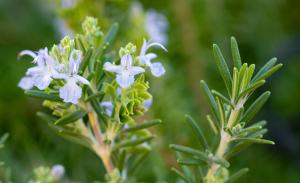
Cyprus also appears to be a good location for any sort of dive training. The location at Turtle Bay is near ideal for Discover Scuba and entry-level training. But Cyprus also seems well-suited for further training, including technical diving, as the required infrastructure is present, with plenty of dive operators to choose from.
It is also a good destination for families and groups, as the island has plenty of other activities, things to do and places to see aside from diving. One can just book a package holiday at one of the many travel agencies that serve Cyprus, and just hook up with a dive operator on location and make your own mix of diving and topside excursions.
